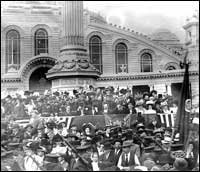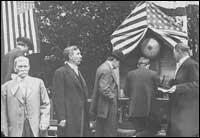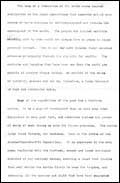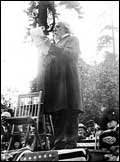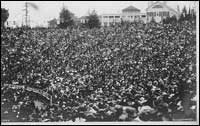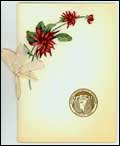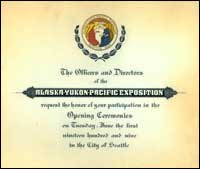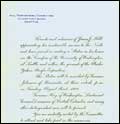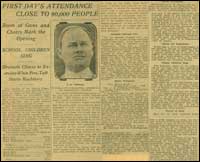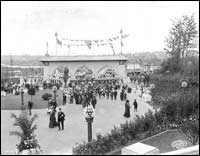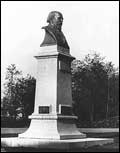|
Opening DayMore than 90,000 people attended the AYP on Opening Day which the Fair's organizers celebrated as a harbinger of a successful Exposition. “The fair that will be ready” was ready indeed and opened in grand style. In downtown Seattle, two welcome arches spanned the streets and a military parade marked the great occasion. In Washington, D.C., a sixteen-gun salute was fired and President Taft pressed a nugget of Alaskan gold set into a telegraph transmitter to officially open the Exposition. When the transmission sounded a gong in Seattle, a great flag was unfurled which released a shower of confetti and a thousand tiny American flags. Businesses throughout the city raised flags and sounded whistles in celebration. On the Exposition grounds, a parade featured U.S. Army troops, Marines from the Pacific squadron, and crewmen from the two Imperial Japanese Navy cruisers that remained in the harbor for the duration of the Exposition. In a packed Amphitheatre, visitors to the Fair heard remarks by Exposition officials as well as an opening address by railroad magnate James J. Hill, who declared: “This occasion marks also a change in the conscious attitude of the Pacific coast toward the rest of the country… This exposition may be regarded as the laying of the last rail, the driving of the last spike, in unity of mind and purpose between the Pacific Coast and the country east of the mountains. . . Never again can the Pacific Coast withdraw into itself: never again can it know any slackening of the tide of life that sweeps through all the nation's veins…” Other Opening Day festivities included a grand banquet for officials and honored guests. James J. Hill's many business ventures—from railroads to shipping to sales of timber land—played a significant role in connecting the Pacific Northwest's natural resources with markets in the rest of the country, thereby shaping the future of the region. To recognize his contributions, a statue of Hill by Finn Frohlich was installed on campus during the AYP and still stands outside More Hall, which today houses the Civil and Environmental Engineering departments. |



